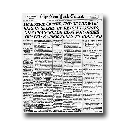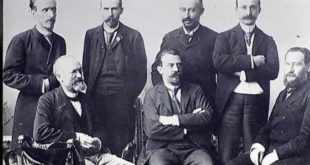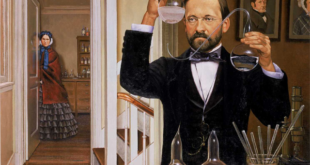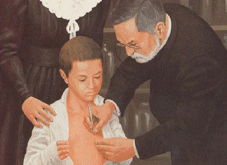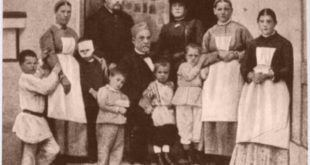Inspiring Career of a Great and Modest Man of Science
PARIS, Sept. 28 — Prof. Louis Pasteur, the distinguished chemist and discoverer of the Pasteur treatment for the cure of rabies, is dead.
—–
Louis Pasteur was pre-eminently a man of his time, of this very moment. His name and the names of the young physicians who became his pupils were synonyms of scientific progress, except to very conservative practitioners, and to these they were synonyms of at least restless research and patient labor.
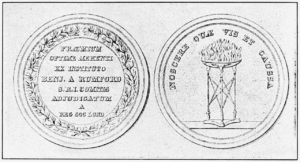
He had implicit faith in science, and he gave the example of incessant investigating from which he knew the future would derive advantage. Even in later years, when adverse criticism that had pained him extremely had ceased, and marks of distinction had come to him from those whose esteem he valued, and a partial paralysis had rendered useless one side of his body, he was at work every day in his laboratory. His head was bent like a ripe sheaf of wheat, his steps were a painful shuffle, but he was always present with the punctuality of one disciplined to answer to a roll call.
He was born at Dole, in the Department of the Jura, Dec. 27, 1822. He became at eighteen a member of the university, in the difficult situation — corresponding to that of szar in England — of a supernumerary master of studies at the College of Besancon. At twenty-one he was admitted as a pupil to the Normal School. He was a graduate in the physical sciences in September, 1846, but he remained at the school two years longer as an assistant instructor in chemistry, obtained a doctor’s degree, and received the appointment of Professor of Physics at Lycée of Dijon. Then his long years of comparative poverty came to an end.
In 1849 he was a substitute at the Chah(sp) of Chemistry in the Strasburg Faculty of Sciences; in 1852 he was invested with this chair. At the end of 1854 he organized the newly created Faculty of Sciences at Lille. In 1857 he returned to Paris as science director at the Normal School.
He retained this office for ten years, adding to his labor in 1863 the tedious, infinitely wearisome Professorship of Geology, Physics, and Chemistry at the Ecole des Beaux-Arts. He was professor at the Sorbonne from 1867 to 1875.
He varied his labors not by recreation, but by changing their nature. He experimented when not teaching, and wrote when not doing either. The “Recueil des Savants Etrangers,” the “Annales de Chimie et de Physique,” and the “Comptes-Rendus” of the Académie des Sciences are full of his memoirs.
In 1863 he published, about spontaneous generation, “Nouvel Exemple de Fermentation Determiné par desAnimalcules Infusoires, Pouvant Vivre sans Oxygene Libre”; in 1866, “Etudes surle Vin, sesMaladies, Causes quiles Provoquent, etc.”, in 1868, “Etudes surle Vinaigre, ses Maladies, Moyens deles Prévenir,” &c; in 1870, “Etudes sur la Maladie des Vers a Soie”; in 1876, “Etudes sur la Biére”; in 1878; “Les Microbes,” the astounding theory by which a revolution occurred in modern therapeutics.
He became a member of the Legion of Honor in 1853, received the Rumford Medal of the Royal Society of London in 1856, a reward of 10,000 florins from the Austrian Ministry of Agriculture and the rank of Commander of the Legion of Honor from the French Emperor in 1868, a degree appointing him a Senator in 1870, a premium of 12,000f from the French Societé d’Encouragement in 1873, the Copley Medal from England, and an annuity of 12,000f from the Assemblée Nationalein 1874, the rank of Grand Officer fo teh Legion of Honor in 1878, election as a member of the Académie Fanaise, to succeed Littré, and the Albert Medal of the Society of Arts in 1882, and the magnificent laboratories of the Pasteur Institute in Paris, built by popular subscription and a liberal contribution from the Czar of Russia. Roty, the excellent medalist, produced in 1892 a commemorative medal of him.
The glamour of the celebrity, the rewards and the emoluments are better known in the world that the work of Pasteur. Appreciation of this requires knowledge of not only the immediate results of his personal labors, but of their issues in other directions. his name is inseparable from any stage of the study of micro-organisms, he founded all modern anti-surgical principles, he was the master of bacteriology, but his influence was more profound than these phrases indicate.
Pasteur gave to the world better methods of preventing and healing disease, an incalculable economy of lives, proofs against attractive hypotheses which were resulting in false philosophical forms, a revelation of the concealed operations of myriads of organisms, a link in the chain of evidence respecting the proof of the law of evolution.
Dr. Carpenter said of him, in a reference to the London Medical Congress of 1881:
“There was none whose presence was more universally or more cordially welcomed than that of a quiet-looking Frenchman, who is neither a great physician nor a great surgeon, nor even a great physiologist, but who, originally a themist, has done for medical science mor than any savant of his day.”
Pasteur demonstrated against all the savants who had preceded him that fermentation is life without air. He extracted the pure juice from the interior of the grape and proved that without contact with impure air it never fermented. He proved that the ferment of the grape is held for germination in the particlesof saccharomyces which cling to its exterior and to the twigs of the vine.
He showed the power of fermentation possessed by the living cells of fruits in the ripening process. He proved that the oxygen of the air can attenuate and extinguish the virulence of a virus. he madedemonstrations in fields seemingly unrelated, and arrived at magnificent syntheses.
He studied molecular matter and crystallography, and arrived at the discovery of the dissymmetrical tartrates.
In 1885 the silk culture of France produced a revenue of 13,000,000f.; in twelve years it fell, by disease in silk worms, to 8,000,000f. The chemist Dumas appealed to Pasteur, who had never handled a silk worm. Pasteur proved that independent mobile corpuscles, which caused the silk plague, were present in all states of the insect — egg, worm, chrysalis, and moth. He proved that when present in the egg they reappeared in all the cyclical alterations of the insect’s life. He proved that they could be readily detected only in the moth. He suggested the selection of healthy moths, proved his views by experiments with others, prophesied results, and restored the silk industry of France.
The carbunclar disease which the French call “charbon” and the English “splenic fever” was investigated by him and successfully fought by inoculation of the furuncular virus in cattle.
The fowl cholera, which attacked the lymphatic glands, was epidemic in Paris. Pasteur suppressed it.
Lister, inspired by Pasteur’s work, studied lactic fermentation, verified the latter’s researches into the influence of air in causing fermentation, and redemonstrated in his own field of inquiries the different causes operating in both fermentation and putrefaction. His practical application of the knowledge was in the perfect antiseptic dressing of wounds, which made the name of Lister famous.
Pasteur observed the epidemic nature of visitation of boils, investigated the pus of furuncles, pointed to the cause of the malady, and prescribed its remedy.
In 1882 he began successful inoculations of pigs against swine fever.
He found bacteria in osteo-myelitis, in typhoid fever, and in puerpural septicemia.
Then, after suppressing tehsilk plague, preserving the vineyards and the vines, successfully vaccinating the cattle, and giving to Lister a new surgical system, Pasteur did something which as not more extraordinary than his other accomplishments, but which struck the popular mind much more impressively: he discovered teh vaccine virus against the rabies or hydrophobia.
In America the malady is comparatively not frequent, but in Europe, and especially in Russia, it has ever been a cause of mortal anguish.
Pasteur proved that the brain substance and the medula of a rabid animal would cause rabies if injected hypodermically, and that the period of incubation was of about the same duration as that following the bite of a rabid dog. Then he established the fact that the period of incubation could be shortened almost to a definite time, and when he had triumphantly replied to all objections, began his amazing record of cures from hydrophobia.
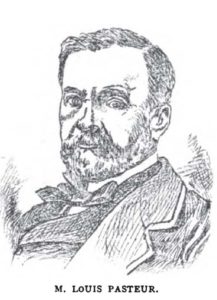
A writer on the perfection of Pasteur’s experimental methods has said:
“The caution exercised by Pasteur, both in the execution and of his experiments and in the reasoning based upon them, is perfectly evident to those who, through the practice of severe experimental inquiry, have rendered themselves competent to judge of good experimental work. He found germs in the mercury used to isolate the air. He was never sure that they did not cling to the instruments he employed, or to his own person. Thus, when he opened his hermetically sealed flasks upon the Mer-de-Glace, he had his eye upon the fileused to detach the drawn-out necks of his bottles; and he was careful to stand to leeward when each flask was opened. Using these precautions, he found the glacier air incompetent in nineteen casesout of twenty to generate life, while similar flasks opened amid the vegetation of teh lowlands were soon crowded with living things.”
He was kind to his assistants and pupils. They were profoundly devoted to him. His work is not finished by his death, but wherever there are lovers of science there will be reverently whispered a regretful comment, for it is a very pure and brilliant light that has gone out.
Originally published on September 29, 1985 in the New York Times
 Pasteur Brewing Louis Pasteur – Science, Health, and Brewing
Pasteur Brewing Louis Pasteur – Science, Health, and Brewing 